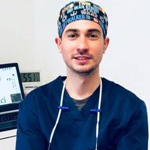Oral Health and Dental Tissue Regeneration
A special issue of International Journal of Environmental Research and Public Health (ISSN 1660-4601). This special issue belongs to the section "Oral Health".
Deadline for manuscript submissions: closed (10 December 2020) | Viewed by 37787
Special Issue Editors
Interests: oral pathology; oral surgery; bone regeneration; 3D software scanning; digital flow in medicine and dentistry
Special Issue Information
Dear Colleagues,
Oral-derived stem cells have been found and investigated in several oral tissues, such as dental pulp and periodontal ligament, from gingiva or periapical cysts. Dental and oral-derived mesenchymal stem cells are promising for tissue engineering and regenerative medicine. Several researchers are working on smart and translational methods to ensure safe and predictable therapies based on stem cells and biomaterials: This would improve dental repairing and overall oral health. Lastly, the challenges have been to combine stem cells with biomaterials and growth factors. Nevertheless, the traditional techniques have also been improved to ensure a good predictability in the clinical scenario. This Special Issue aims to give a clear point of view of state-of-the-art developments, with some exciting insights into future strategies. Topics mainly, though not exclusively, include dental repairing/regeneration, stem cells, biomaterials, nanotechnologies, exosomes, growth factors, interaction between general health and oral health, oral and systemic microbiome, nutraceutics and its effects on oral health, scaffolds, and custom-made prostheses.
Prof. Dr. Luciano Pacifici
Dr. Andrea Pacifici
Guest Editors
Manuscript Submission Information
Manuscripts should be submitted online at www.mdpi.com by registering and logging in to this website. Once you are registered, click here to go to the submission form. Manuscripts can be submitted until the deadline. All submissions that pass pre-check are peer-reviewed. Accepted papers will be published continuously in the journal (as soon as accepted) and will be listed together on the special issue website. Research articles, review articles as well as short communications are invited. For planned papers, a title and short abstract (about 250 words) can be sent to the Editorial Office for assessment.
Submitted manuscripts should not have been published previously, nor be under consideration for publication elsewhere (except conference proceedings papers). All manuscripts are thoroughly refereed through a single-blind peer-review process. A guide for authors and other relevant information for submission of manuscripts is available on the Instructions for Authors page. International Journal of Environmental Research and Public Health is an international peer-reviewed open access monthly journal published by MDPI.
Please visit the Instructions for Authors page before submitting a manuscript. The Article Processing Charge (APC) for publication in this open access journal is 2500 CHF (Swiss Francs). Submitted papers should be well formatted and use good English. Authors may use MDPI's English editing service prior to publication or during author revisions.
Keywords
- oral health
- regenerative medicine
- biomaterials
- prosthetics
- tissue engineering
- oral pathology
- oral medicine
- nutraceutics
- microbiome
Benefits of Publishing in a Special Issue
- Ease of navigation: Grouping papers by topic helps scholars navigate broad scope journals more efficiently.
- Greater discoverability: Special Issues support the reach and impact of scientific research. Articles in Special Issues are more discoverable and cited more frequently.
- Expansion of research network: Special Issues facilitate connections among authors, fostering scientific collaborations.
- External promotion: Articles in Special Issues are often promoted through the journal's social media, increasing their visibility.
- Reprint: MDPI Books provides the opportunity to republish successful Special Issues in book format, both online and in print.
Further information on MDPI's Special Issue policies can be found here.






